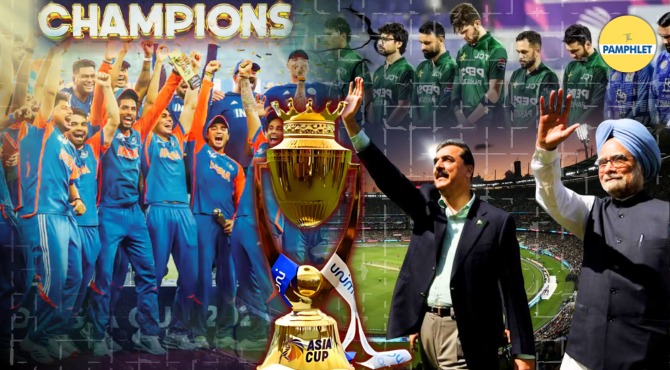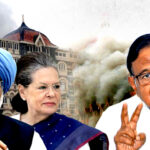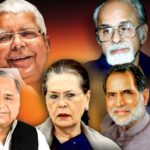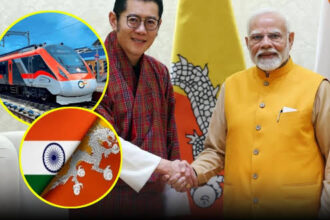For Indians, cricket is never just a game; it is the ‘unofficial religion’ of the country. From the ‘Dosti Series’ of 2004 to the Asia Cup 2025 trophy-less celebration, the sport has mirrored the nation’s political will. When governments bend, players extend handshakes. When governments stand tall, players reflect the same defiance on the field.
The political shadow over cricket
Few nations intertwine sport and politics as closely as India and Pakistan do with cricket. Every major terror strike, every shift in Delhi’s political power, or if Karachi wants to make another hubbub, has left a mark on the cricketing relationship with one another.
What stands out in this long arc is the contrast: the Congress years, where cricket was repeatedly deployed as a “peace bridge” despite terror, and the Modi era, where cricket became a tool of assertion, sometimes louder than diplomacy itself. The shift from Congress-era handshakes to Modi-era refusals is not coincidental—it is structural.
Congress years: Handshakes in the shadow of terror
- 2004- A quick return to normalcy: Barely three years after the Parliament attack, the UPA government revived cricketing ties with Pakistan. The “Dosti Series” of 2004 sent India’s team to Lahore and Karachi, signalling reconciliation even as scars from terrorism remained fresh.
- 2008–2011 – Bombs at home, bonhomie abroad: Between the Mumbai carnage of 26/11 and blasts in Pune, Varanasi, and Delhi, India’s urban landscape was repeatedly bloodied. Yet, in March 2011, the world watched Manmohan Singh and Yusuf Raza Gilani applaud each other together at the Mohali World Cup semi-final. Packaged as “cricket diplomacy,” it conveyed not strength but accommodation in the face of ongoing terror.
- 2012–2013 – Bilaterals and MoUs: Pakistan returned for a bilateral series in December 2012, with then Home Minister Sushilkumar Shinde insisting that “sports should be kept separate from terrorism.” By July 2013, BCCI and PCB had signed an MoU promising six future series, even as mutilated Indian soldiers were being returned from the LoC. The political message was clear: cricket remained a symbol of peace, whatever the cost.
Modi years: A policy of no compromise
- 2014 Onwards – Zero Bilateral Cricket: With the change of government, the tone hardened instantly. Since 2014, there has been no bilateral cricket between India and Pakistan, an unbroken stance that has persisted across three terms.
- 2016 Uri Attack – Surgical Strikes and Scheduling Shifts: Beyond military retaliation, India leaned on cricketing bodies, ensuring Pakistan lost face and leverage even in tournament hosting.
- 2019 Pulwama – Diplomacy Through Isolation: Forty CRPF personnel were killed; India’s demand at the ICC was blunt: isolate Pakistan. Even the World Cup fixture was debated as a boycott. When the match went ahead, the framing was deliberate: a surgical strike on the pitch.
- 2023 & 2025 Asia Cups – Setting the Terms: India refused to play in Pakistan, forcing the 2023 Asia Cup into a “hybrid model.” In 2025, the symbolism peaked when Indian players declined to accept the trophy from caretaker PM Mohsin Naqvi, celebrating without it. It was less about the silverware, more about the message.
The Gen Z factor: A generation of defiance
What makes 2025 distinct is not just its political posture, but also its generational temperament. India’s new cricketing core—Tilak Varma, Abhishek Sharma, Shubman Gill, Arshdeep Singh, Harshit Rana—belongs to Gen Z.
This generation did not grow up with the rituals of “cricket diplomacy.” They grew up with headlines of retaliation, leaders who invoked nationalistic pride, and surgical strikes. Their cricket is not handshakes and photo-ops, but aggression and refusal. Declining a trophy from a Pakistani leader was not a gimmick—it was their natural language of pride.
Rahul Gandhi may hope that India’s Gen Z will emulate youth uprisings abroad. But the Gen Z the nation saw in the Asia Cup was busy asserting itself on the pitch, reflecting not discontent but nationalism.
Cricket as a political mirror
The arc is unmistakable.
- 2004’s “Dosti Series’ mirrored appeasement.
- 2011’s applause at Mohali mirrored hesitation.
- 2012’s bilateral revival mirrored accommodation.
- 2025’s boycott mirrored resolve.
Cricket, far from being a separate arena, has always served as a barometer of India’s political spine. When governments bent, players smiled. When governments stiffened, players refused.
The Asia Cup 2025 marks the point at which this alignment became generational as well. For India’s Gen Z cricketers, nationalist pride was not a performance—it was instinct. And when that instinct finds a government unafraid to stand tall, the field becomes more than a game. It becomes a mirror of the nation itself.






